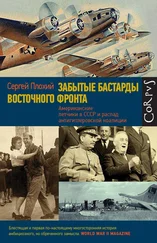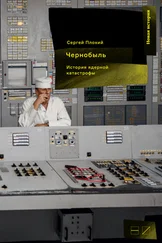The Chernobyl rabbis were famous for collecting money for charitable causes. In the early twentieth century there were a number of Jewish prayer houses, a school for Jewish girls, and an asylum in Chernobyl. The Jews of Chernobyl suffered disproportionately at the time of the revolution and the civil war that followed it, not only from passing military units but also from marauding gangs, the members of which were often recruited by local warlords from the area’s Ukrainian and Belarusian villagers. 7
Quite a few local Jewish youths had sided with the Bolsheviks—the political and military force that turned out to be the most friendly toward the poor Jewish masses and offered them the shortest path to emancipation. One of the leaders of the revolutionary transformation, Stalin’s right-hand man Lazar Kaganovich, came from the Chernobyl region. In the mid-1920s, Kaganovich became the communist boss of Ukraine and presided over the policy of korenizatsiia , or indigenization, which put a temporary halt to the cultural Russification of the local population and promoted the development of Ukrainian and Jewish culture.
As Stalin’s policies changed, however, so did the role that Kaganovich played in Ukraine. In the early 1930s, he became one of the main architects of the Holodomor, the great Ukrainian famine that took the lives of close to 4 million survivors of the revolution and the civil war and of the children who had been born to them in the years that followed. Some 1 million people died in the Kyiv region alone. In Kaganovich’s native district of Khabne, the death toll was 168 individuals per 1,000—the area was more than decimated. Tens of thousands did not survive the famine and live to see the renaming of Khabne to Kaganovychi-1, and the village of Kabany, where the party boss was born in 1893, to Kaganovychi-2, in 1934, probably in recognition of the native son’s loyalty not to his homeland but to his boss in the Kremlin. 8
Then came the horrors of World War II. The Germans entered Chernobyl on August 25, 1941. Less than three months later, on November 19, the occupation authorities ordered the approximately 400 Jews still remaining in the town to gather near the synagogue. They were then marched to the premises of a Jewish collective farm called New World. There they were gunned down by automatic fire in the antitank ravine that some of them had helped dig as part of a futile effort by the Red Army commanders to stop the invaders. That was almost the end of the Jewish community of Chernobyl. By the time Briukhanov rented a hotel room there in the winter of 1970, there were only 150 Jewish families in the town where Jews had once been the majority. One of their synagogues had been turned into the headquarters of the local military commissariat.
The Chernobyl Jews who survived the Holocaust found refuge with partisan units in the surrounding forests. The communist-organized guerrilla groups, which enlisted local Ukrainian and Belarusian peasants, were active in the region from the fall of 1941. But the low-intensity war between the communist-backed partisans and the German-organized police (including local cadres) turned into a bloody vendetta. The executions of partisans, and, once the tide of the war turned, of policemen, took place in public, further brutalizing the local population. The settling of accounts among the relatives of those involved in the conflict would continue long after the end of the war. 9
The Red Army recaptured Chernobyl and its environs from the Germans in the fall of 1943. It was a long and bloody battle. At stake was Chernobyl’s port on the Prypiat River, the hub of the city’s economic activity, as well as the bridges over the river and the nearby railway station. The Red Army suffered enormous casualties. It lost ten of its bravest—soldiers and officers decorated with the country’s highest award, Hero of the Soviet Union. For the locals, the long-awaited liberation from the Nazis brought more death and hardship. With the Red Army in control of the region, the local male population was immediately called up and enlisted in the army. Many of those who survived the occupation were thrown into battle without arms, training, or even uniforms, dying on the outskirts of their villages and towns.
As Briukhanov’s car passed the Chernobyl city limits, he recognized a familiar silhouette on the right side of the road. It was the statue of a Soviet soldier memorializing natives of the village of Kopachi who had died in the war and Red Army soldiers who had died in battle for the village in 1943. The first list was significantly longer than the second. In Chernobyl, the soldiers who had died in the six-week battle for the town were buried in a place that later became known as the Park of Glory. Its Alley of Heroes led up to an obelisk with an eternal flame at its base. “To the warrior liberators from the working masses of the Chernobyl district, May 1977,” reads the inscription on one of the monuments in the park. Next to the inscriptions are plaques with names of Red Army generals and the units they led in the battle for the town. 10
Over the years, Briukhanov had attended quite a few commemoration ceremonies at the Chernobyl Park of Glory on May 9, Soviet Victory Day. The cult of heroes of the Great Patriotic War, as the Soviet-German conflict of 1941–1945 became known in Soviet parlance, commemorated only those who had died wearing the Red Army uniform. The rest were largely forgotten. There would be no monuments to victims of the Holocaust or of the Holodomor. Both atrocities went unacknowledged.
A few minutes after the director’s car passed the monument to the war heroes, Briukhanov could already see the huge white tube of the Chernobyl plant’s cooling tower on the horizon. There, according to the official Soviet narrative, the shadows of the past were lifting: the miracle of technological progress was about to deliver a bright future. To the right of the canal that the car was following, there appeared the walls of Unit 5, which was still under construction and surrounded by tall, powerful cranes. Then the white walls of the operating units came into view: Units 3 and 4 were joined together in one huge building; Units 1 and 2 were separate.
The area near the village of Kopachi had been chosen as the construction site of the nuclear plant, in December 1966. The search for the right place had begun a year before that, with a memo from the deputy head of the Ukrainian government, Oleksandr Shcherban, to the Central Committee of the Communist Party of Ukraine (CPU). A former vice-president of the Ukrainian Academy of Sciences and an early enthusiast of nuclear energy, Shcherban had decried the lack of electrical-power-generating facilities in Ukraine, predicting a possible slowdown of the republic’s economic development if new sources of energy were not found promptly.
Shcherban knew that two nuclear power stations had been launched in Russia in 1964 and advocated the construction of three such stations in Ukraine: one in the south, another in the west, and a third in the area around Kyiv. He was soon backed by his superior, the head of the Ukrainian government, Volodymyr Shcherbytsky, and Shcherbytsky’s boss, the first secretary of the CPU, Petro Shelest, who was also a member of the all-Union Politburo. Shelest wrote to Moscow demanding that Shcherban’s proposal be included in the Union’s plans for the construction of new nuclear power stations. In response, the Union government approved the building of one nuclear power plant in Ukraine. Kyiv was not unduly disappointed by the reduction in the number of plants: the important thing was that the republic was getting on the nuclear bandwagon and acquiring what was then considered cutting-edge technology. 11
In the fall of 1966, Volodymyr Shcherbytsky issued a decree ordering the start of the exploratory work for the construction of what was then known as the “Central Ukrainian Nuclear Power Plant.” The commission formed in Kyiv in November of that year soon concluded that there was no better place to build the plant than the area near Kopachi. It was a fairly large settlement, with more than a thousand inhabitants, but surrounded by a sparsely populated area. The village was distant enough from big cities and towns, as well as from the resort areas—another site was turned down because it was too close to such an area. It was also close to the Prypiat River, which was essential for the functioning of a nuclear plant, but its location was not a marshland. No less important was the site’s proximity to a railway station—the railway had been built during the first Soviet five-year plan, its construction begun under the Chernobyl area’s native son, Lazar Kaganovich.
Читать дальше
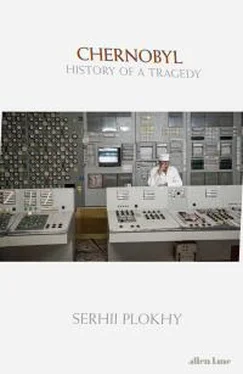
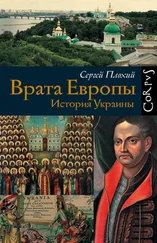
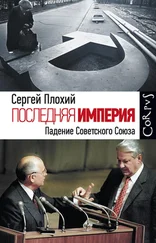
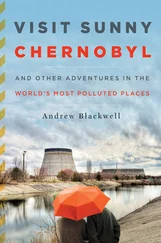
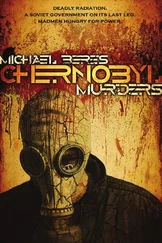
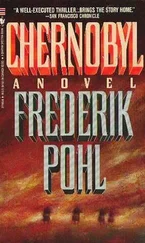
![Сергей Плохий - Чернобыль - История ядерной катастрофы [litres]](/books/385171/sergej-plohij-chernobyl-istoriya-yadernoj-katastrof-thumb.webp)
![Сергей Плохий - Человек, стрелявший ядом [История одного шпиона времен холодной войны]](/books/405163/sergej-plohij-chelovek-strelyavshij-yadom-istoriya-od-thumb.webp)

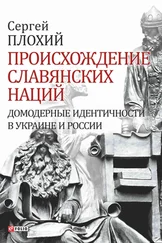
![Сергей Плохий - Потерянное царство. Поход за имперским идеалом и сотворение русской нации [c 1470 года до наших дней]](/books/433093/sergej-plohij-poteryannoe-carstvo-pohod-za-impersk-thumb.webp)
